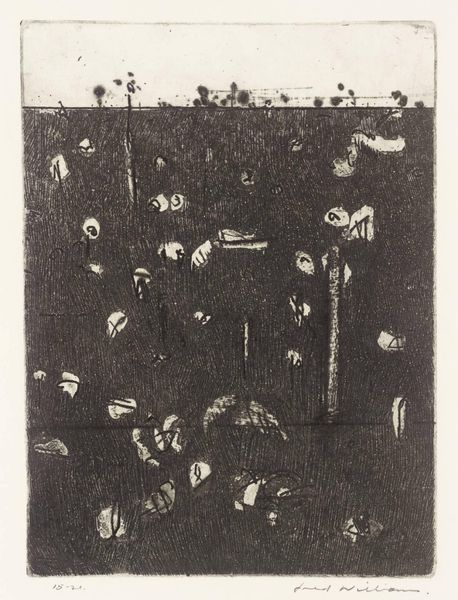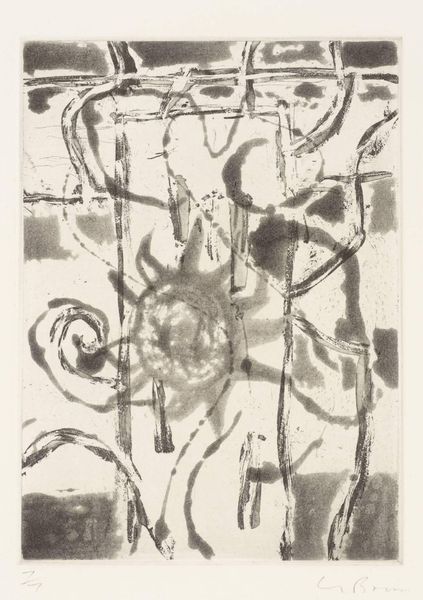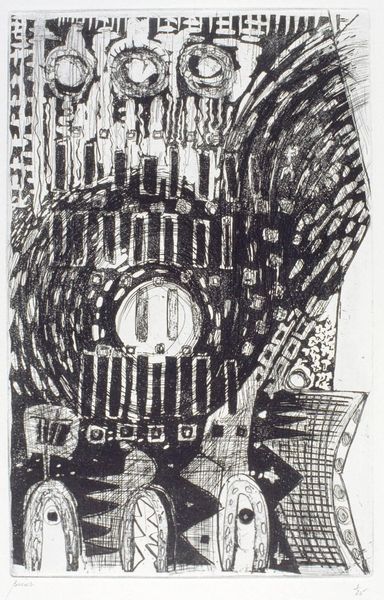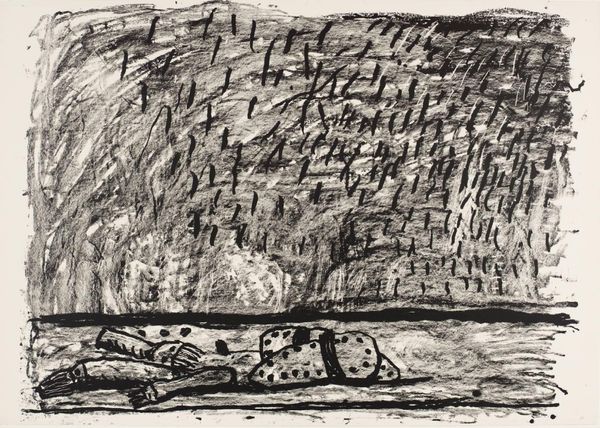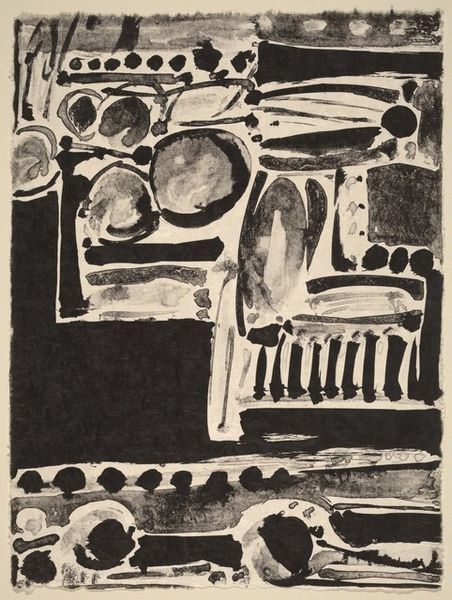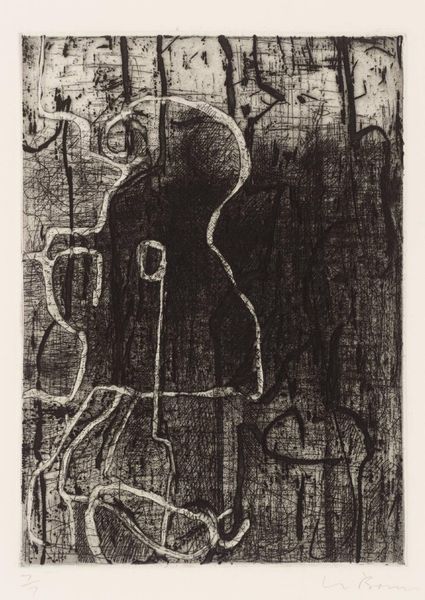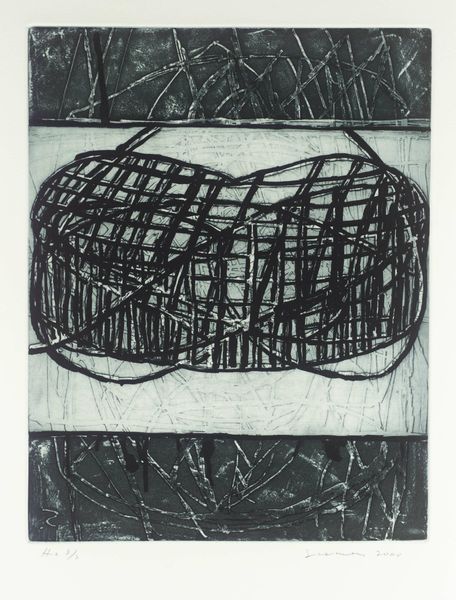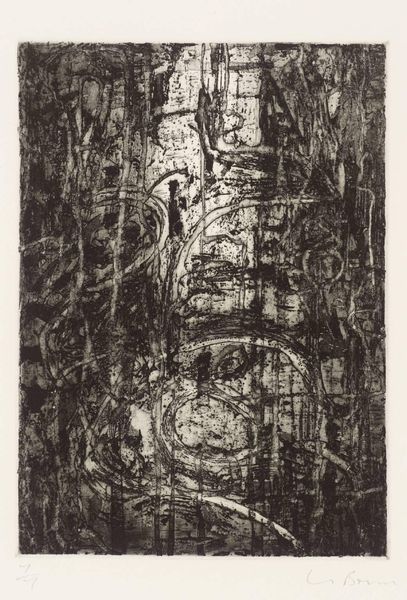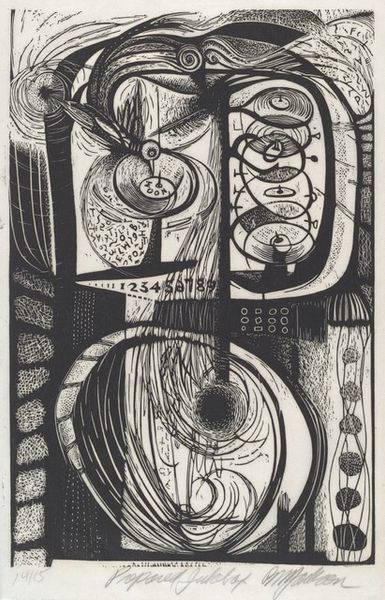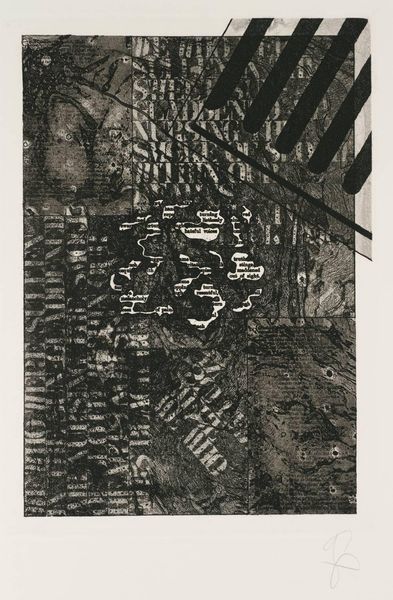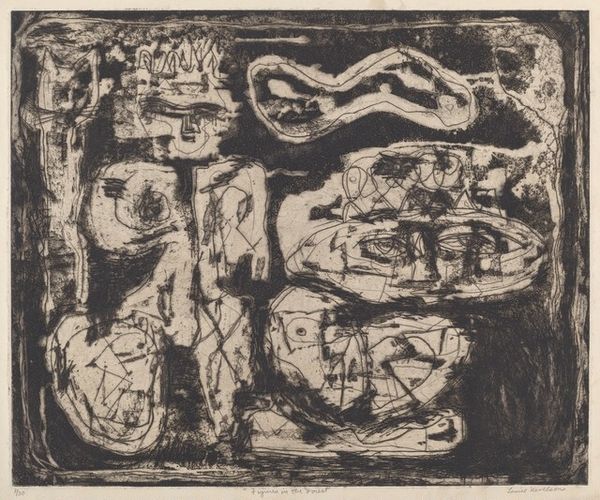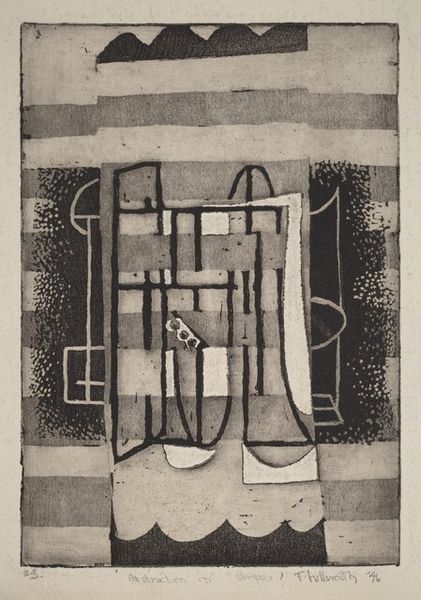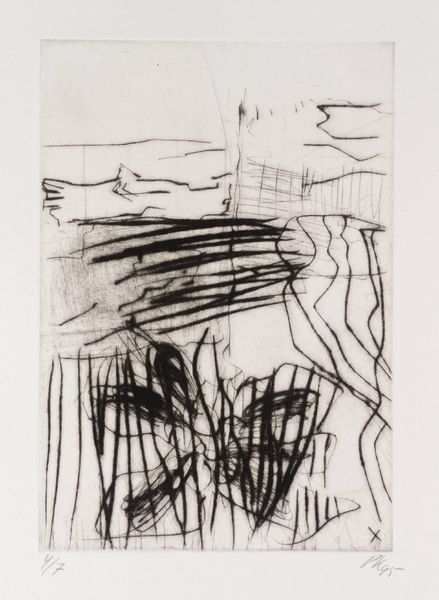
Dimensions: unconfirmed: 735 x 565 mm
Copyright: © The estate of André Bicât | CC-BY-NC-ND 4.0 DEED, Photo: Tate
Curator: This fascinating print is entitled "Percussion" by André Bicât. Held in the Tate collection, this artwork presents a deeply textured, almost dreamlike composition. What are your first thoughts? Editor: Visually, it feels incredibly dense and perhaps even unsettling, like a collection of fragmented memories struggling to coalesce. Curator: I see that. Each section contains symbols. We see arrangements of circles, bottle-like shapes, and something that resembles a stylized face. These recurring motifs likely held personal significance for Bicât, perhaps hinting at his own psychological landscape. Editor: Considering Bicât's life spanned much of the 20th century, is there a social or political context that might inform how these symbols would resonate with his audience? Was he working in response to broader cultural anxieties? Curator: Absolutely. The post-war period saw artists grappling with trauma and uncertainty. This fragmented imagery might reflect that era's sense of disruption and the search for new forms of meaning. Editor: It makes you consider how art helps to process history. Curator: It certainly does. I leave this experience pondering the enduring power of art to reflect and refract the complexities of human experience. Editor: Indeed, quite a percussive statement.
Comments
Join the conversation
Join millions of artists and users on Artera today and experience the ultimate creative platform.
tate 6 months ago
⋮
Percussion is part of a portfolio of prints titled Rhythms. This text discusses the group of works (P11757-P11763) as a whole. Rhythms is a portfolio of seven etchings made in 1965 and printed on off-white wove paper. Each print was made in the artist's London studio in an edition of twenty-five. Bicât retained only two complete suites containing the first and second imprints, and this portfolio contains the first set of imprints. His decision to create the two portfolios at great expense at a time when money was short is evidence of their importance to him. The artist felt that although the prints could be sold separately they had been created as a suite and they should be viewed as such. Throughout his life Bicât remained pleased with the two portfolios. He never parted with either edition and both have remained in the hands of the family until his children presented this portfolio to Tate in 2001. The seven etchings refer to music and can be read as analogies for the various movements within a symphony or concerto. Music was a major feature in Bicât's life, and his wife had been a concert pianist. The artist, who would frequently make connections between music and art, tended to listen to music as he worked. His daughter Tina Bicât remembers his studio resounding to the music of Béla Bartók (1881-1945) during what was a period of emotional turmoil for her father. The images in the portfolio are dreamlike, almost nightmarish, and they apparently refer to the unsettling dreams Bicât was having at this point. He worked intensely on these plates, devoting himself to nothing else until they were completed. They are strongly worked and one has a sense of the physical exertion of the artist in the deeply bitten line. The plates became almost like reliefs and bear comparison with his sculptures. This link is made explicit in the four prints made with shaped plates, which echo the sculpted heads he was making at the time. Bicât's talent for, and understanding of, the technique of etching led to his appointment as tutor in this subject at the Royal College of Art, London, in 1966, a post he held until 1974. Chloe Johnson and Giorgia BottinelliFebruary 2002
